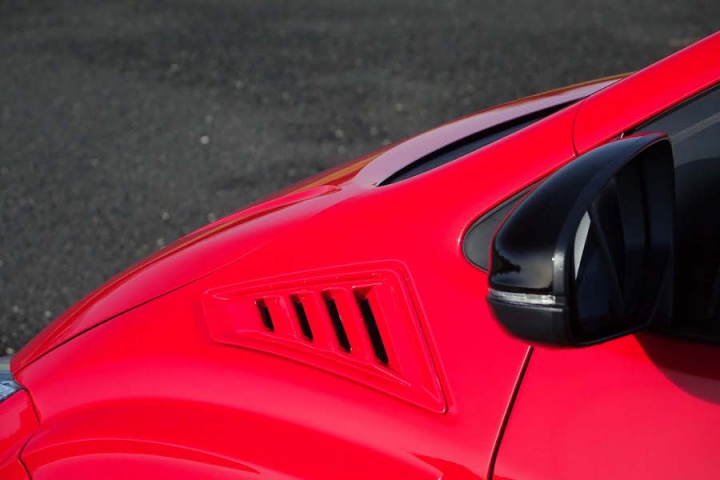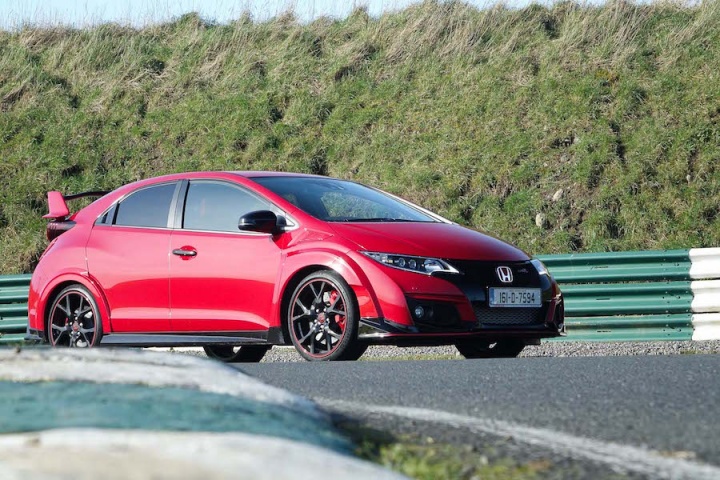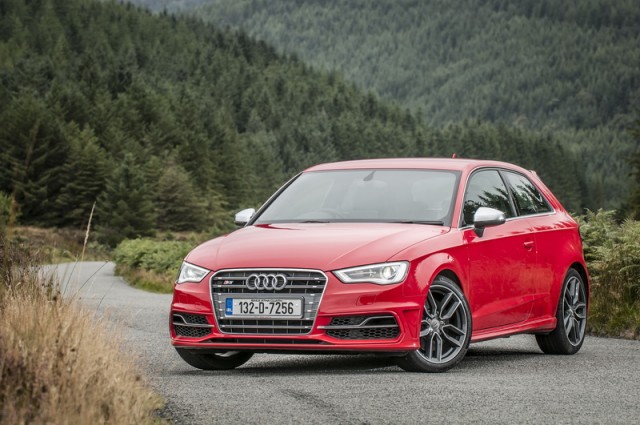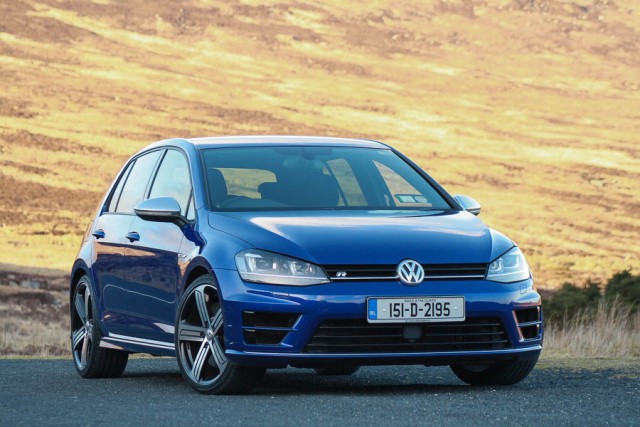Good: perfect driving controls, huge grip, good chassis, big noise
Not so good: OTT appearance, too firm for Irish back roads, expensive
It's not unusual for a car maker to slowly turn up the wick of its hot hatch throughout its lifecycle, to keep buyers coming back for more. It works particularly well for models aimed at those that love driving - see the Megane Renaultsport for example. But Honda, it seems, has skipped a few steps with its new Civic Type R and gone straight for the banzai mad-as-a-bag-of-rats edition from the outset.
I mean, just look at it. We're all for body add-ons that enhance the performance and driving experience, but we also feel that Honda could have integrated the aerodynamic package in a more attractive manner than it has. This car screams "HEY YOU. YEAH, YOU WITH THE 'GARDA' SASH; WANNA FIGHT?" Subtle, it is not and it doesn't get much more so if you stay away from the GT Pack (which adds red highlights to the wheels and elsewhere) or go for all black. The growing-old side of me longs for a car using this mechanical package without the garish body kit, though no doubt there are plenty of fan-boys that disagree.
But there is a very good reason for the Civic Type R's appearance, and that's Honda's insistence early on in the model's development that it would be the fastest front-drive car around the Nürburgring. Talk about making a rod for its own back. That claim got up the noses of several rivals, notably SEAT, and the goal posts clearly moved before the Civic was launched. Hence, Honda had to go all out and there's a lot more to talk about than a visual makeover of questionable taste.
A high-revving petrol engine is traditionally at the heart of any Honda Type R model, but moving with the times, this Civic was always going to feature turbocharging. It's a 2.0-litre, four-cylinder unit using direct injection and it has more power, torque and (according to Honda) response than any previous Honda production car engine. Though it uses a single-scroll turbocharger, Honda has employed its VTEC (Variable Timing and Lift Electronic Control) valve control to help with response at low revs without sacrificing top end power. And with 310hp at 6,500rpm, few drivers will hanker after more. Especially as it's backed up by a thumping 400Nm of torque at 2,500rpm. That ensures it feels rapid at any engine speed, yet it's perfectly happy to rev out to its 7,000rpm limiter. It's bonkers quick at all times and while it's not the most melodic of engines, the four large exhaust outlets ensure it makes a suitably loud blare when you're enjoying the full performance. Indeed, dig into the detail of the car and you'll discover that Honda removed silencers from the system and instead came up with an alternative way to meet noise legislation.
Traditionalists may lament the loss of the naturally aspirated VTEC units of old, but the new engine is better in almost every respect while keeping the emissions and fuel economy to 2016-friendly levels. Thankfully, Honda believes that a car such as the Civic Type R should have a manual gearbox and the six-speed item is nigh on perfect, with a short mechanical shift that is incredibly satisfying to use. It features a mechanical limited slip differential that is crucial to this car's ability to deploy all that power to the road through the front wheels only. It allows you to ease back onto the power mid-corner instead of waiting until the exit is in sight, as power is diverted to the outside wheel. This has the effect of pulling the car around the turn, eradicating understeer and increasing cornering speed and stability. It has to be experienced to be believed.
Even on a bumpy and mildly damp mountain road it managed to find masses of forward traction and though it's firmly sprung, it still clung on and was huge fun. The Type R's suspension is very different to that of a regular Civic, even if the rear torsion beam set-up is similar in theory. Up front is a completely new layout designed to eradicate torque steer, while there's an Adaptive Damping System as standard that alters the damping on all four corners depending on the situation. Honda reckons this allows the car comfort and agility, but make no mistake: the balance is firmly tipper towards cornering speed and most will find it hard on the road.
Yet there's also a more extreme '+R' mode, which stiffens up the base damper tuning by a further 30 per cent, reduces power assistance to the steering (itself a direct and relatively communicative system) and alters the throttle map for even more response at lower revs. This, we like the idea of, but sadly, the chassis is too firm in this guise for most roads. Even at Mondello Park race circuit we found the suspension too stiff, leading to bobbing around, reducing stability and grip and actually detracting from enjoyment. Best to keep away from that button unless you're as much of a head case as this car is...
And you need to be a committed fan to justify spending nigh on fifty grand on a Civic. Arguably it's worth it for the engineering that has gone into this car, and we'd be confident in its reliability too, but that's an awful lot of money. Along with the alternatives listed below, there are loads of really satisfying front-drive hot hatches around for considerably less cash. Think Volkswagen Golf GTI, SEAT Leon Cupra, Opel Astra OPC and Peugeot 308 GTi for starters. Few of those are quite as fast or hardcore as the Honda, and while the uncompromised focus of the Type R is to be admired, it will, ultimately, be an acquired taste. We'd love to try a version without the body add-ons and say 20 per cent less stiffness in the dampers and €10,000 less on the price tag. But that's not usually the direction car makers go with these things, is it?














































